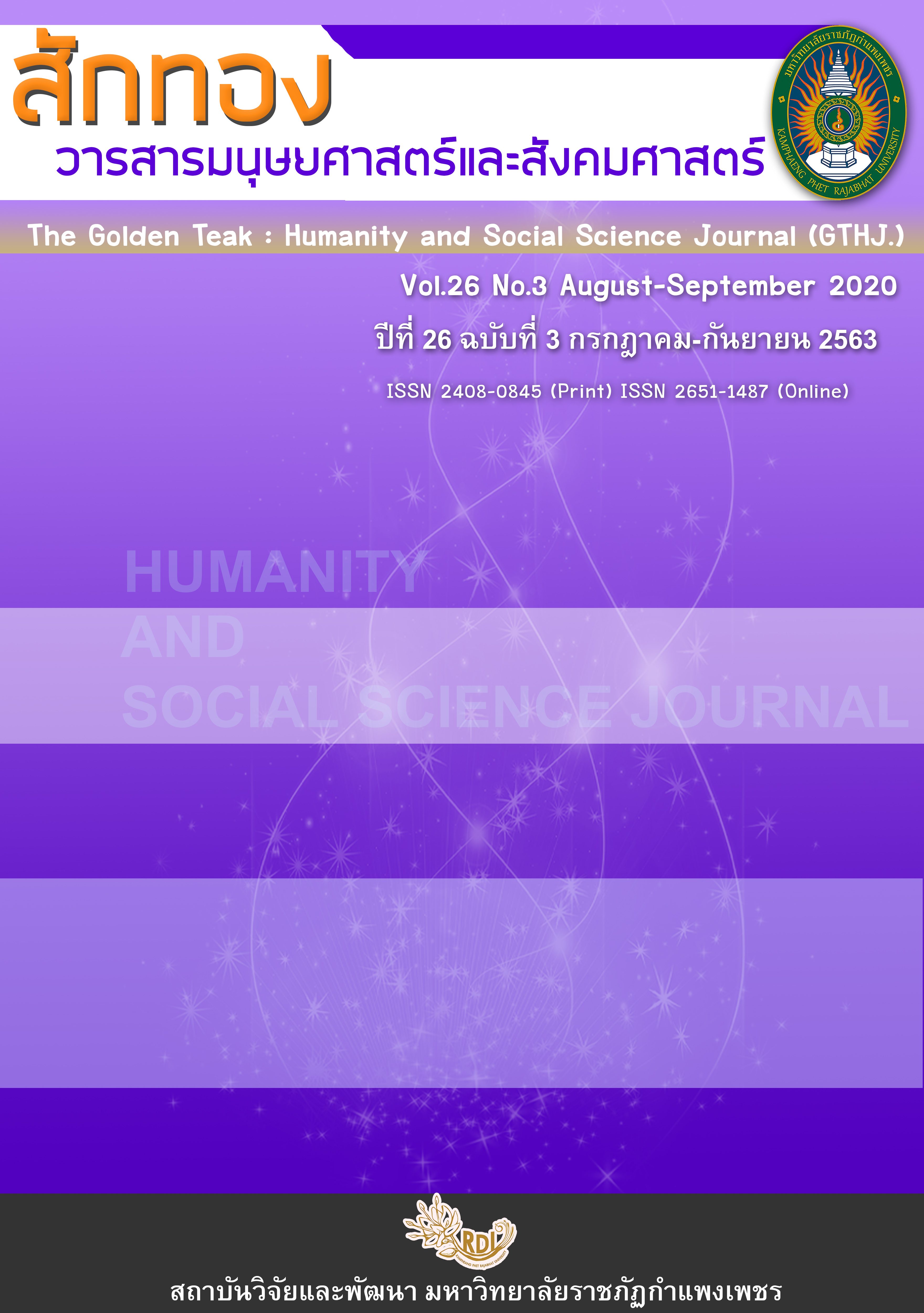Por Tor : The Traditional Belief Aspectsof Chinese Ancestors in Phuket Province
Main Article Content
Abstract
Por Tor was the belief tradition and there was the format of composition about shrine ritual which was thesacred space, including using specific artificial areasfor performing the ritual. The areas were set as the scenery, stage and entertainment. There wereimportant persons both Thai Chinese people and othersfrom inside and outside the area who participated in the ritual by circulating and working together for “Time Dimension of Sacred Space” from the 1st of seventh month to the last day of seventh month according to the Chinese lunar year. The mentioned above was held for paying respect to the ancestral spirits, heroic spirits andother spirits in community areas.The communities or shrines where organized the ritual but there was no Kim Sin or the Chinese god idol; Ti Sux Xeiy which was made as paper doll sculptures or name labelsinstead.Include the red turtle dessert called as “Auguk”, the important symbol of Por Tor tradition; meaning of goodnessand gratitude to the ancestors of Chinese peoplethat leaded to art creation process. The red turtle dessert was meant as “the armor or protection” believed that the turtle was the auspicious animal; vehicle of heaven, having a long life and it could take the people step over the land of hardship. Thai Chinese people in Phuket still maintain the tradition inheritance continuously.
Article Details
บทความที่ได้รับการตีพิมพ์เป็นลิขสิทธิ์ของวารสาร สักทอง : วารสารมนุษยศาสตร์และสังคมศาสตร์ สถาบันวิจัยและพัฒนา มหาวิทยาลับราชภัฏกำแพงเพชร
ข้อคิดเห็นใดๆ ที่ปรากฎในวารสารเป็นวรรณกรรมของผู้เขียนโดยเฉพาะ ซึ่งมหาวิทยาลัยราชภัฏกำแพงเพชรและบรรณาธิการไม่จำเป็นต้องเห็นด้วย
References
Chantaronanon, P. (2003). Chinese way. Bangkok : Plan Printing.
Chuenpimonchankit, S. (2018, June 25). President, Hokkien Chinese culture philosopher. Interview.
Durkheim, E. (1965). The Elementary Forms of the Religious Life. New York : The Free Pree.
Konanthakiat, C. (2002). Buddha, Bodhisattva, Chinese deities. (5th ed). Bangkok : Amarin Printing and Publishing.
Konanthakiat, C. (2003). Chinese tradition are like, different and weird. (2nd ed). Bangkok : Amarin Printing and Publishing.
Manujuntharat, S. (2018, June 21). President, Hokkien Chinese culture philosopher. Interview.
Pattranupravat, R. (2009). Festivals and Rituals of Chinese Shrines in Samutsongkhram province. University of the Thai Chamber of Commerce Journal Humanities and Social Sciences [Online], 29, (3). Available : http://utcc2.utcc.ac.th/utccjournal/journal_book. [2018, August 7].
Samuthakhup, S., et al. (1996). Spirit-Medium Cult Discourses and Crisis of Modernity in Thailand. Bangkok : SAC Princess Maha Chakri Sirindhorn Anthropology Centre.
Seng Tek Ben, Shrine. (n.d.). History of Seng Tek Ben Thin Shrine, Phuket and the origin of the tradition of thin and sticky. n.p.
Sikkhakosol, T. (2014). Chinese festivals and offerings. Bangkok : Matichon.
Thapanee, (pesud.). (2006). Local rituals and beliefs. Bangkok : saengdao.
Wasinanon, N. (2009). Chinese Arts and Culture. Bangkok : Sukkhapabjai.
Wongwiphak, C. (2012 October-2013 March). Beliefs, traditions, rituals, changes in the stream Culture. The Journal of the Thai Khadi Research Institute, 10(1), 7.


